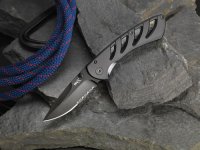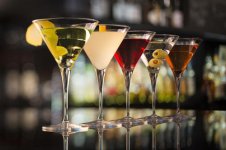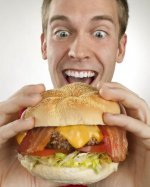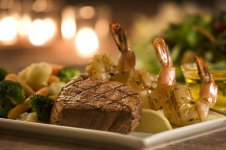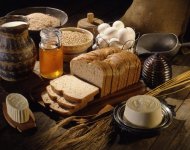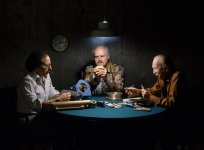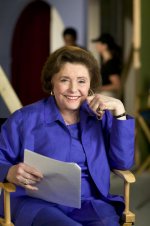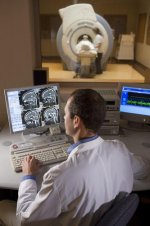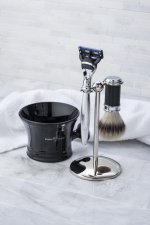moodlover
Established
Where does "looks like flash" come from? Anyone ever compared flash vs continuous?
(this question is only about the visual look or appearance, not about power, convenience, features, temperature, etc)
Howdy. I live by the motto that light is light, and regardless of the source they all [generally] are guided by the same principals and laws of physics. However, I was speaking to a well known lighting expert in my city and he told me that continuous/hot lights actually look slightly different. "In portraits, hot light has a subtle nuance to it, a subtle glow or smoothness because the quality of light is different at the source". I found this hard to believe if the bulb whether continuous or flash is modified the same way, under the same power. Then I thought, the different in using flash vs continuous is the shutter speed! Flash tends to kill any type of ambience while continuous lights can allow for a slow shutter speed to soak up the ambience. Perhaps this is how some old school film photographers achieved a "glow" in their portraits.
So I ask, has anyone actually conducted a test on this topic? I wish I could, but don't have continuous lights at the moment. Why is it that flash "looks like flash" and continuous light doesn't "look like continuous". Is it because the key light on the face is usually too strong when people use strobes? Where does the "looks like flash" idea come from if light is light after all?
Why is it that the extremely powerful hot lights used in cinema don't look artificial, whether using hard light or soft light, they always look very well balanced.
(this question is only about the visual look or appearance, not about power, convenience, features, temperature, etc)
Howdy. I live by the motto that light is light, and regardless of the source they all [generally] are guided by the same principals and laws of physics. However, I was speaking to a well known lighting expert in my city and he told me that continuous/hot lights actually look slightly different. "In portraits, hot light has a subtle nuance to it, a subtle glow or smoothness because the quality of light is different at the source". I found this hard to believe if the bulb whether continuous or flash is modified the same way, under the same power. Then I thought, the different in using flash vs continuous is the shutter speed! Flash tends to kill any type of ambience while continuous lights can allow for a slow shutter speed to soak up the ambience. Perhaps this is how some old school film photographers achieved a "glow" in their portraits.
So I ask, has anyone actually conducted a test on this topic? I wish I could, but don't have continuous lights at the moment. Why is it that flash "looks like flash" and continuous light doesn't "look like continuous". Is it because the key light on the face is usually too strong when people use strobes? Where does the "looks like flash" idea come from if light is light after all?
Why is it that the extremely powerful hot lights used in cinema don't look artificial, whether using hard light or soft light, they always look very well balanced.
charjohncarter
Veteran
I've used both but continuous long ago. My quick answer is the way the light is, as you say obeying the laws of physic; continuous light have reflector cones around them or now days a new age diffusing system, and flash (electronic flash) has usually nothing. But if you get into the equipment that is available to you today (soft boxes, umbrellas, beauty lights, plastic shower screens) there are many ways to achieve the same lighting as continuous lights.
But for our type of photography the old flash bulb gave the best of all worlds.
But for our type of photography the old flash bulb gave the best of all worlds.
Robert Lai
Well-known
The hot lights have reflectors of different sizes / shapes, as well as light modifiers such as diffusers and soft boxes. Most importantly, you can see and modify your lighting effect before you take the picture.
With electronic flash, you need to do a repeated series of tests to see if you're getting the effect that you want. With digital it's a bit of a time waster, with film you don't know what you're going to get.
Electronic flash usually has a relatively small reflector, and thus a concentrated beam. The hot lights have larger diameter reflectors, and thus a wider, more diffuse beam.
As stated above, flash bulbs give you the benefit of both. The power of hot lights, but without the heat buildup. Large reflectors, typically 5 to 7 inches in diameter. The short but intense burst duration that exceeds in terms of light flux most electronic flashes.
With electronic flash, you need to do a repeated series of tests to see if you're getting the effect that you want. With digital it's a bit of a time waster, with film you don't know what you're going to get.
Electronic flash usually has a relatively small reflector, and thus a concentrated beam. The hot lights have larger diameter reflectors, and thus a wider, more diffuse beam.
As stated above, flash bulbs give you the benefit of both. The power of hot lights, but without the heat buildup. Large reflectors, typically 5 to 7 inches in diameter. The short but intense burst duration that exceeds in terms of light flux most electronic flashes.
x-ray
Veteran
I'm an old school commercial photographer of 50 years. I apprenticed under a PPof A master photographer in the early 70's and became a PPof A master in 1985. For the first 12 or so years of my career I used hot lights mainly. I still use hot light for some work.
Any difference in the look of contineous vs strobe is in the control of the light and the modifiers. Fresnel spots are commonly used in hot highting where as there are little to no choices for fresnel spots in strobe with one exception that I'm aware of. I use Speedotron black line strobes and have 8" fresnel spots made by Strand Century and modified by Speedotron. DeSiste also has a 10" fresnel spot for Speedotron. The 8 & 10 can handle 4800 we in a single pop. There have been others modified for other brands but they aren't common. Most strobe lighting is soft light through a softbox or umbrella. Most hot light is directional like fresnel spots or PAR or flood lights. The light other than color temperature is the same but the difference is as mentioned above.
When I had my big (6000sqft) studio I used fresnel spots up to the 10,000 watt mighty Mole all the way down to 150watt LTM peppers. I still use and just bought more fresnel lighting but generally 150-300watt for very small products that I need extreme control on. I use snoots and bar doors and home made modifiers for additional control.
Again most strobes are used with soft boxes, umbrellas and grids which don't do the same thing as a spot.
Fresnel spots can be used with soft boxes that are specially designed to handle the e tremendous hear. Even firing 4800 ws focused in a soft box creates a huge amount of heat.
Again, same light head and modifier, tungsten will look exactly like strobe in the same head and modified. Matter of fact I occasionally use the modeling lights in my strobes as the light source to shoot by and turn the flash part off. I mostly do this with food when I want super shallow DOF. It's hard to reduce strobes down to a power level to shoot at 1.4 or 2.
Any difference in the look of contineous vs strobe is in the control of the light and the modifiers. Fresnel spots are commonly used in hot highting where as there are little to no choices for fresnel spots in strobe with one exception that I'm aware of. I use Speedotron black line strobes and have 8" fresnel spots made by Strand Century and modified by Speedotron. DeSiste also has a 10" fresnel spot for Speedotron. The 8 & 10 can handle 4800 we in a single pop. There have been others modified for other brands but they aren't common. Most strobe lighting is soft light through a softbox or umbrella. Most hot light is directional like fresnel spots or PAR or flood lights. The light other than color temperature is the same but the difference is as mentioned above.
When I had my big (6000sqft) studio I used fresnel spots up to the 10,000 watt mighty Mole all the way down to 150watt LTM peppers. I still use and just bought more fresnel lighting but generally 150-300watt for very small products that I need extreme control on. I use snoots and bar doors and home made modifiers for additional control.
Again most strobes are used with soft boxes, umbrellas and grids which don't do the same thing as a spot.
Fresnel spots can be used with soft boxes that are specially designed to handle the e tremendous hear. Even firing 4800 ws focused in a soft box creates a huge amount of heat.
Again, same light head and modifier, tungsten will look exactly like strobe in the same head and modified. Matter of fact I occasionally use the modeling lights in my strobes as the light source to shoot by and turn the flash part off. I mostly do this with food when I want super shallow DOF. It's hard to reduce strobes down to a power level to shoot at 1.4 or 2.
x-ray
Veteran
When I appeenticed we did a few executive portraits. We had several Photogenic #4 photo flood portrait lights. They consisted of a large (~3ft) diameter spun aluminum reflector that was rather shallow. The #4 bulb was mounted in the center on a shaft that would move the bulb in or out of the center of the reflector. Mounted over the front of the bulb was another small cup shaped aluminum reflector that kept direct light from the bulb from hitting the subject. In effect all light was directed into the large reflector and no direct light from the bulb reached the subject.
By moving the bulb in or out it changes the angle of the light making it harder or softer. These large reflectors had a shape that caused the center of the light beam to be stronger than at the edge. By adjusting the angle of the reflector relative to your subject you could "feather" the light for some gorgeous effects. It allowed you to put more light on the center of the face or more important features and keep the forehead or the side of the face from getting too hot. It hard to explain but easy to show.
About the closest thing to the Photogrnic light is the beauty dish but they lack the subtle control of those old photogenics. How I wish I had a pair modified for strobe.
I don't know why lighting changed so dramatically but it happened when soft boxes came into style. Like I said I learned with hot lights and still love the control I have with them.
By moving the bulb in or out it changes the angle of the light making it harder or softer. These large reflectors had a shape that caused the center of the light beam to be stronger than at the edge. By adjusting the angle of the reflector relative to your subject you could "feather" the light for some gorgeous effects. It allowed you to put more light on the center of the face or more important features and keep the forehead or the side of the face from getting too hot. It hard to explain but easy to show.
About the closest thing to the Photogrnic light is the beauty dish but they lack the subtle control of those old photogenics. How I wish I had a pair modified for strobe.
I don't know why lighting changed so dramatically but it happened when soft boxes came into style. Like I said I learned with hot lights and still love the control I have with them.
x-ray
Veteran
With electronic flash, you need to do a repeated series of tests to see if you're getting the effect that you want. With digital it's a bit of a time waster, with film you don't know what you're going to get.
Electronic flash usually has a relatively small reflector, and thus a concentrated beam. The hot lights have larger diameter reflectors, and thus a wider, more diffuse beam..
Studio strobes have modeling lights. In many studio units the modeling light can be controlled to be proportinate to the intensity of the flash. No need to shoot dozens of tests, you can visually see what you are getting.
As to reflector size, for my strobes I have 8" fresnels to 30" reflectors from soft beauty dishes to various shape and depth spun aluminum reflectors. Now throw in pencil lights and bare bulbs. Hot lights range from fresnels of varying sizes to reflectors in various shapes and sizes up to several feet in diameter. There are pans, scoops, PAR bulbs of various focus with fresnel lenses combined to bare bulbs. You name it and it's currently or has been made.
Now throw into the mix silks, scrims, gobos, flags, dots and cookies plus a dozen kinds of diffusers.
Rob-F
Likes Leicas
Some really thorough answers here! My short answer is I feel I can spot a flash photo from ten paces any day, if it was taken without a diffuser or bounce flash. If there was some effort to diffuse the light, then it may look more natural. I think the color temperature can be a dead giveaway in some cases, as well.
PKR
Veteran
Some really thorough answers here! My short answer is I feel I can spot a flash photo from ten paces any day, if it was taken without a diffuser or bounce flash. If there was some effort to diffuse the light, then it may look more natural. I think the color temperature can be a dead giveaway in some cases, as well.
If the lighting was used correctly, it would be difficult for me to tell the difference unless flash duration was a factor. By correctly, I mean proper attention to color temperature and similar characteristics.
I don't have the flash (watt second/joules) capacity that x-ray has. I have a total of 4 small 800w/s Dynalite flash generators and 5 heads of different form factors (and some speed lights). The Dynalite units I own are compatible with all Lowel Omni Light accessories. Omni lights are a tungsten light. I no longer own any of them but, have all the grids, barn doors, scrims and half scrims that fit my Dynalite electronic flash heads. I also use a number of softbbox and umbrella sizes in my work. I've looked at a lot of lighting in photographs and would be hard pressed, with a modern photograph, to make a determination as to the source unless obvious (I can see a reflection of the unit in the photo).
My nonacademic training was as an assistant to a NatGeo photographer and two years as an assistant to Irving Penn's former studio manager. I did the latter to learn Penn's lighting.
http://lowel.tiffen.com/omni/index.html
c
PKR
Veteran
When I appeenticed we did a few executive portraits. We had several Photogenic #4 photo flood portrait lights. They consisted of a large (~3ft) diameter spun aluminum reflector that was rather shallow. The #4 bulb was mounted in the center on a shaft that would move the bulb in or out of the center of the reflector. Mounted over the front of the bulb was another small cup shaped aluminum reflector that kept direct light from the bulb from hitting the subject. In effect all light was directed into the large reflector and no direct light from the bulb reached the subject.
By moving the bulb in or out it changes the angle of the light making it harder or softer. These large reflectors had a shape that caused the center of the light beam to be stronger than at the edge. By adjusting the angle of the reflector relative to your subject you could "feather" the light for some gorgeous effects. It allowed you to put more light on the center of the face or more important features and keep the forehead or the side of the face from getting too hot. It hard to explain but easy to show.
About the closest thing to the Photogrnic light is the beauty dish but they lack the subtle control of those old photogenics. How I wish I had a pair modified for strobe.
I don't know why lighting changed so dramatically but it happened when soft boxes came into style. Like I said I learned with hot lights and still love the control I have with them.
My understanding is it changed years ago when Penn's grid rig was used to duplicate the huge north window light in his studio. You can see this light used in the 60s, powered by a pair of 20k w/s Ascor Sunlight Series flash generators (8x10 stopped down). It was on call "north window light" and after seeing it in Vogue, everyone wanted it.
My former employer told me it was suspended from the studio ceiling with ropes and pulleys, and was so heavy that, it took two assistants controlling the ropes to direct it. Ascor flash heads were huge and the grid had 16 diffused heads. The cables alone were very heavy.
RichC
Well-known
(this question is only about the visual look or appearance, not about power, convenience, features, temperature, etc)
Howdy. I live by the motto that light is light, and regardless of the source they all [generally] are guided by the same principals and laws of physics. However, I was speaking to a well known lighting expert in my city and he told me that continuous/hot lights actually look slightly different. "In portraits, hot light has a subtle nuance to it, a subtle glow or smoothness because the quality of light is different at the source". I found this hard to believe if the bulb whether continuous or flash is modified the same way, under the same power. Then I thought, the different in using flash vs continuous is the shutter speed! Flash tends to kill any type of ambience while continuous lights can allow for a slow shutter speed to soak up the ambience. Perhaps this is how some old school film photographers achieved a "glow" in their portraits.
So I ask, has anyone actually conducted a test on this topic? I wish I could, but don't have continuous lights at the moment. Why is it that flash "looks like flash" and continuous light doesn't "look like continuous". Is it because the key light on the face is usually too strong when people use strobes? Where does the "looks like flash" idea come from if light is light after all?
Why is it that the extremely powerful hot lights used in cinema don't look artificial, whether using hard light or soft light, they always look very well balanced.
Here's your problem:
If the lighting was used correctly, it would be difficult for me to tell the difference unless flash duration was a factor.
Three common ways in which flash is not used "correctly":
- You say that "Flash tends to kill any type of ambience while continuous lights can allow for a slow shutter speed to soak up the ambience."
However, using flash "correctly" often requires a mixture of flash and natural light. This is most noticeable in flash photography where the subject is lit but the background is dark or even pitch black. - Using the flash from the wrong position. In most flashlit pictures, the flash is close by, in front of the subject and at head height. No other light source, natural or artificial, is usually in this location!
- A naked flash is a point source, so you get black shadows with sharp edges rather than a diffuse roll off.
All this is obvious, yet how many photographers (as opposed to camera users!) do you see using an off-camera flash with a diffuser or exposing for the ambient light as well as their flash?
Some posters in this thread have described elaborate studio set-ups. However, if you make a point of learning about light and how to use equipment, you don't need much. You will need at least two flashguns and be able to use them off camera. And don't bother with fancy synced flashes - to use flash properly, use manual settings. All of those fancy Bowens (RIP!) studio strobes are essentially controlled by a dimmer knob! As most people are under the impression that using flash is an arcane art (it's not - it's mostly trial and error and learning from experience!), you can buy excellent old flashes very cheaply. I prefer Nikons, and have a bucketful...
I have my own studio now with studio strobes (and hot lights too), and all kinds of light modifiers. However, I still often do what I've always done: improvise. I use all kinds of thing to modify the light to get the look I want - greaseproof paper, cardboard, aluminium foil... I've blocked the light with a broom handle before, to break up an unflattering shadow! And I recall once wanting the light to be less "white" so I taped a food wrapper on my flash.
So, unless you're photographing something that only a strobe can capture, like a bullet through an apple, there is no essential difference in the look of flash photographs compared with other photographs.
Strobes are convenient. However, hot lights are my favourite, as you get exactly what you see, whereas there's more trial and error with flash (the built-in modelling lights can only give an approximation). But that's just me and my preference - most studio photographers I know prefer strobes. (Not to mention that my three hot lights together chuck out about 2000 watts - and, yes, I've burnt my fingers!) However, none of this has any affect on the look of the photos: strobe or hot light - the end result, the photo, will look the same.
The photograph below was taken in the storeroom of The Booth Museum of Natural History, which is too dark to take a handheld photo, so was lit by a couple of diffused flashguns, one near, one far, with bits of paper taped to them for diffusion! Personally, I think it has "ambience", and it definitely doesn't have the harsh, head-on "flashed" look!

sevo
Fokutorendaburando
I suspect that these notions date back to skin colour rendition in black and white, and are now irrationally kept alive by the unusually shoddy quality of on camera flash illumination (on camera cannot compare with any proper lighting setup, the only fair comparison would be a camera-mounted flashlight).
As far as the spectrum is involved, flash essentially is daylight. In black and white photography, skin looks much lighter and blood vessels and skin discolourations are subdued in red-biased illumination (regardless whether tungsten lighting, or a orange filter mounted in front of a flash or a on-camera filter). Back in the era of ortho film that was even more obvious, so every photo school of that time spent much effort on hammering in the lesson that outdoor (and arc light) portraits created a blotchy, dark, masculine skin texture. And some of that reputation obviously has carried on.
Another issue where lights do indeed matter is metamerism. Metameric paints and pigments will look different in different light - but that is mostly irrelevant in black and white unless you mix light sources (it may matter if the same object is light at one and dark on another end while parallel objects indicate that the light intensity is constant). In colour, metamerism works against tungsten (and even more so against FL and LED) lighting, as our perceptual habits (and industry standards built upon them) use daylight as the reference for colours. If any, we perceive colours to be off in low colour temperatures. But metamerism is far more complex than the "blue filter - bad skin, orange filter - good skin" rule of thumb above. Colour rendition could be manipulated by filter in black and white photography, while metamerism issues generally call for changes to the film and are beyond the power of the photographer - so there never was much of an incentive to learn the latter if you were only a photographer and not a film engineer.
There also used to be differences in the colour representation of daylight and tungsten film - due to metamerism at the subject, tungsten film in tungsten light can never be as generally accurate (relative to a daylight reference) as daylight film in daylight. And as the most relevant market niche for tungsten film used to be indoor portrait, many tungsten films did not even try to be a good choice for product photography, and instead were tuned towards pleasing skin colour (at any rate as long as skin meant varying shades of pink).
FWIW, cinematography these days generally uses something very much like flash (HMI) - that it often looks better than photography is due to the effort they put into lights and lighting (often the majority of the staff and equipment on site).
As far as the spectrum is involved, flash essentially is daylight. In black and white photography, skin looks much lighter and blood vessels and skin discolourations are subdued in red-biased illumination (regardless whether tungsten lighting, or a orange filter mounted in front of a flash or a on-camera filter). Back in the era of ortho film that was even more obvious, so every photo school of that time spent much effort on hammering in the lesson that outdoor (and arc light) portraits created a blotchy, dark, masculine skin texture. And some of that reputation obviously has carried on.
Another issue where lights do indeed matter is metamerism. Metameric paints and pigments will look different in different light - but that is mostly irrelevant in black and white unless you mix light sources (it may matter if the same object is light at one and dark on another end while parallel objects indicate that the light intensity is constant). In colour, metamerism works against tungsten (and even more so against FL and LED) lighting, as our perceptual habits (and industry standards built upon them) use daylight as the reference for colours. If any, we perceive colours to be off in low colour temperatures. But metamerism is far more complex than the "blue filter - bad skin, orange filter - good skin" rule of thumb above. Colour rendition could be manipulated by filter in black and white photography, while metamerism issues generally call for changes to the film and are beyond the power of the photographer - so there never was much of an incentive to learn the latter if you were only a photographer and not a film engineer.
There also used to be differences in the colour representation of daylight and tungsten film - due to metamerism at the subject, tungsten film in tungsten light can never be as generally accurate (relative to a daylight reference) as daylight film in daylight. And as the most relevant market niche for tungsten film used to be indoor portrait, many tungsten films did not even try to be a good choice for product photography, and instead were tuned towards pleasing skin colour (at any rate as long as skin meant varying shades of pink).
FWIW, cinematography these days generally uses something very much like flash (HMI) - that it often looks better than photography is due to the effort they put into lights and lighting (often the majority of the staff and equipment on site).
PKR
Veteran
SNIP
FWIW, cinematography these days generally uses something very much like flash (HMI) - that it often looks better than photography is due to the effort they put into lights and lighting (often the majority of the staff and equipment on site).
The biggest problem with HMI is/was the flicker rate of the arc. The older magnetic ballast (sin wave 2x 60Hz) have been replaced with an electronic (square wave) unit in the latest lights. Most of these lights, I'm familiar with, are found as rental units. A friend owns a generator service for HMI lighting and has to deliver power at precisely 60Hz. Any deviation could miss sync with the camera shutter. When making stills on a film set, the photographer must be aware of the lighting used and select appropriate shutter speeds. And yes, often big lighting crews attending some, sometimes, very big lights.
I'm in agreement with your thinking that on camera flash may be the source of the poor lighting the thread author has in mind. Today with current digital cameras being used for news footage, LED lamps are mounted in a similar fashion to on camera flash. More poor, but convenient lighting.
x-ray
Veteran
I'm going to post a series of images and would like to see if anyone can tell which are tungsten and which are strobe lit. Also tell me if you can which is digital and which is film. Some of these are pretty old.
Attachments
x-ray
Veteran
x-ray
Veteran
x-ray
Veteran
x-ray
Veteran
PKR
Veteran
I'm going to post a series of images and would like to see if anyone can tell which are tungsten and which are strobe lit. Also tell me if you can which is digital and which is film. Some of these are pretty old.
The shot with the glasses.. electronic flash. You know why too!.. the lemon. Salad, same reason.
Card players, tungsten .. a practical in frame.
The guy eating the burger.. electronic flash + umbrellas
Lady with bird, electronic flash + soft box. Razor, same.
Scanner with operator, electronic flash, digital, soft box on left of frame maybe same on fill too. But, now thinking film (looking at his hair) .. also, tricky shot because of monitor exposure, unless digital and stripped in. I can't tell. Scanner could be a second shot stripped in too. I've done these, all in the dark while monitor exposure is made, then fire the flash for everything else during the timed exposure. Do it several times to bracket with film. It's a little dance. Easier with digital. The scanner looks like it is lit over head, but mixing fluorescent light into this is even trickier, unless you bounced light off of the ceiling (what I would have done)?
Carhartt .. looks like film, shadow detail while holding highlights.
Bread, film, tungsten .. the butter, if real, has me hedging.
Surf and turf, film, tungsten
If I'm half right, I'm happy. Viewing on a 7" tablet.
For readers other than x-ray, None of this is based on the unmodified quality of the light.
Ko.Fe.
Lenses 35/21 Gears 46/20
Flash tends to kill any type of ambience while continuous lights can allow for a slow shutter speed to soak up the ambience. Perhaps this is how some old school film photographers achieved a "glow" in their portraits.
As unpaid amateur I tend to use one external on camera TTL flash dialed to -1,-2 and balance it with ambient light by lowering shutter speed to something like 1/60, 1/50 and increasing ISO from 400 to 1600. And it actually does balance well enough for me with the ambient light on environmental portraits a.k.a. family pictures.
I remember at least two old school a.k.a. film photographers discontinuous how 1/15 shutter speeds gives different feel in the portraits and light.
x-ray
Veteran
I'm not trying to corner anyone here, just see if you can see any difference in tungsten and strobe. Is there a difference in the quality of light?
Share:
-
This site uses cookies to help personalise content, tailor your experience and to keep you logged in if you register.
By continuing to use this site, you are consenting to our use of cookies.


